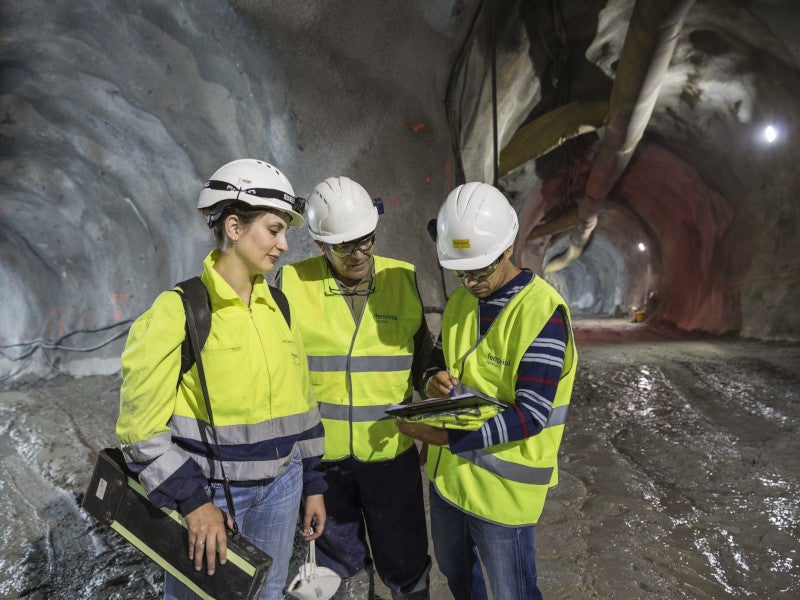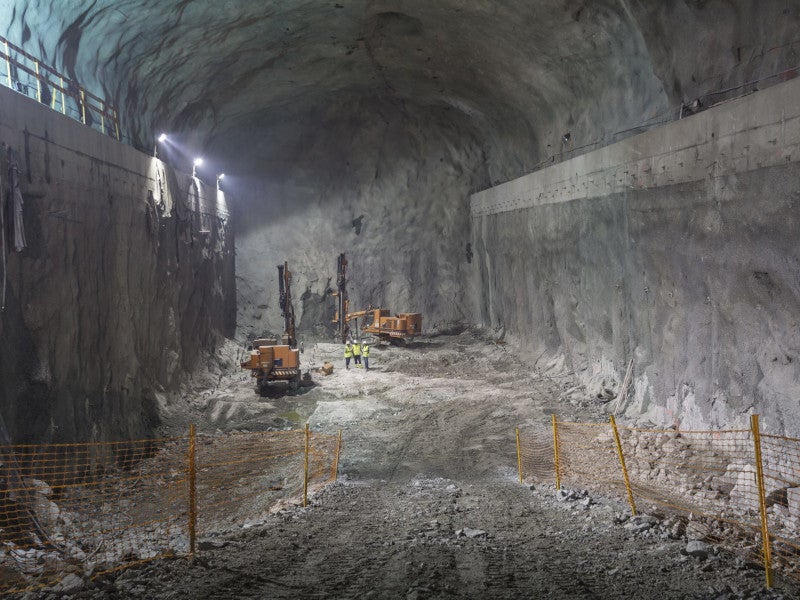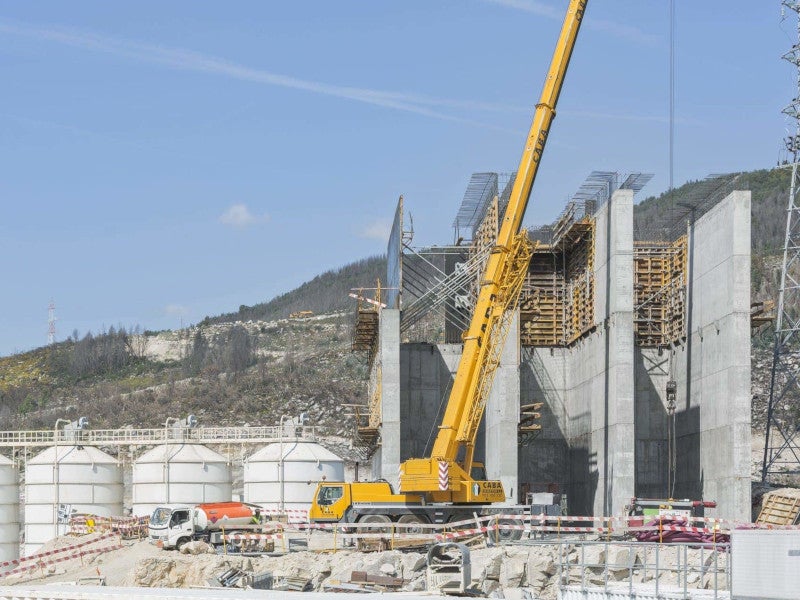The 1.15GW Tamega Giga Battery hydroelectric power plant is being developed in the northern part of Portugal. It is the largest hydroelectric power plant to be developed in Europe in the last 25 years.
The project is being developed by Iberdrola, an energy utility based in Spain, with an estimated investment of €1.5bn ($1.51bn). It entails the construction of three dams and hydroelectric power plants named Gouvaes, Daivoes and Alto Tamega.
Iberdrola commenced construction on the project in 2014. Construction of the Daivoes and Gouvaes power plants was completed in July 2022. The Alto Tamega power plant is currently under construction and is expected to be completed by 2024.
The Tamega complex will have an annual production capacity of 1,766GWh, which is sufficient to meet the energy requirements of the nearby towns as well as the cities of Braga and Guimaraes, which have more than 440,000 homes.
Iberdrola also plans to develop two wind farms with a combined capacity of 300MW, which will transform the Tamega complex into a hybrid power plant.
Tamega Giga Battery hydroelectric power plant location details
The Tamega hydroelectric power plant is being built on the Tamega river, which is a tributary of the Duero river, in the Tras-os-Montes region located approximately 120km from the Oportu city in northern Portugal.
Tamega Giga Battery hydroelectric power plant details
The 880MW Gouvaes pumped storage hydroelectric power plant includes a 35m-high concrete gravity dam on the Torno river, a tributary of the Tamega river.
The dam is composed of an underground power generation plant that is 120m long, 20m wide and 44m high. The plant consists of four 220MW turbines, the first of which was connected to the grid in January 2022. It also has a transformer hall measuring 80mx17mx14m.
The Daivoes power plant includes a 77.5m-high concrete gravity arch dam with a crest length of 265m. The Daivoes reservoir is the lower reservoir of the Gouvaes reservoir and is 200m long and 35m high. It is designed as a reversible system, enabling the transfer of water between the two reservoirs by taking advantage of the elevation difference of more than 650m.
The plant can pump out excess energy during periods of high production and can generate electricity when needed with its substantial storage capacity. It is equipped with two 59MW turbines and has a total capacity of 118MW.
The Daivoes power plant development also included the construction of more than 5km of power lines, 7km of roads, two sewage treatment facilities and other infrastructure.
The Alto Tamega power plant includes a 106.5m-long and 334m-high double curvature concrete dam. It will be equipped with two turbine units of 80MW each.
In addition, the Gouvaes quarry was developed to provide aggregates for use in the concrete mixes of the project. It is expected to generate more than 2Mt of materials for the power project, which is equal to the weight of 5,000 fully loaded Boeing 747s carrying passengers.
Tamega Giga Battery hydroelectric power plant financing
The European Investment Bank (EIB) granted Iberdrola a €650m ($804.4m) loan in April 2018. The first tranche of €500m (€586m) was provided in July 2018.
In May 2019, Iberdrola received a €400m ($445.95m) loan for the project from Instituto de Credito Oficial (ICO), a state-owned bank in Spain. The loan has a maturity period of 12 years, with a grace period of two years.
Contractors involved at Tamega Giga Battery hydroelectric power plant
EPTISA, an engineering and consulting company, was contracted for carrying out feasibility studies, apart from the design of the dams, tunnels and hydroelectric equipment.
Andritz Hydro, a supplier of electromechanical systems and services for hydropower facilities, received three contracts for the Tamega Giga Battery project. It was contracted in 2016 to supply the electro-mechanical equipment and penstock for the Gouvaes power plant.
The second contract was awarded in June 2017 for the supply of hydro-mechanical equipment for all three power plants. The scope of the contract included the design, fabrication and installation supervision of trash racks, radial and roller gates, stop logs and other hydraulic equipment. Andritz received the third contract for the Alto Tamega power plant to supply hydroelectric equipment.
Efacec Power Solutions, an energy solutions provider, received a €11m ($12.6m) contract for the manufacture, supply and installation of transformers at all three dams in July 2017.
Consulting company IDOM provided the detailed design of the Alto Tamega power plant’s electrical system.
Engineering consulting company NRV was contracted to provide detailed design and technical assistance during the construction.
A consortium of ACCIONA, Mota Engil and Edivisa received a €110m ($118m) contract to build the Alto Tamega dam. ACCIONA is an infrastructure company, while Mota Engil is an engineering and construction company and Edivisa is a construction company.
The consortium was previously awarded a €50m ($53.6m) contract for the construction of the Gouvaes hydroelectric project’s penstock.
A consortium of construction companies Ferrovial Agroman and MSF received an €80m ($84.2m) contract in January 2017 for the construction of the Gouvaes dam. The consortium was awarded a €90m ($102.6m) contract in May 2016 for the construction of the Daivoes dam.
Steel manufacturing company ArcelorMittal supplied more than 500t of steel fibres for the project.
JASO Industrial Cranes, a designer and manufacturer of cranes, supplied nine cranes for the construction of the three power plants.
Industrial engineering services company TAMOIN, ropeway solutions provider LEITNER and engineering consultancy TPF are some of the other contractors involved in the project.
Project benefits
The Tamega Giga Battery can store 40 million kWh, which is equivalent to the electricity consumed by 11 million people in a day. It is expected to reduce 1.2 million tonnes of carbon emissions annually and diversify Portugal’s electricity generation resources while reducing more than 160,000t of oil imports a year.
The project will also contribute to economic activity and employment generation in the region. The construction phase of the project will generate approximately 3,500 direct jobs and 10,000 indirect jobs.
Iberdrola has also prioritised environmental protection while implementing the project. More than 1,000ha of land is planned to be reforested along with the planting of 17,000 cork oaks. Furthermore, various measures will be adopted to improve the populations of protected animals in the area.







